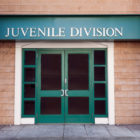
Shaken by post-pandemic disruptions, some states take a harder line on school discipline
|
Parents in Boone County, Kentucky, were outraged this past January when a ninth grader who had been suspended a year earlier for threatening violence against his fellow students returned to class as soon as his punishment time was up.
“The kid had a ‘kill list’ which named students — friends he was going to kill,” said Republican state Rep. Steve Rawlings.





